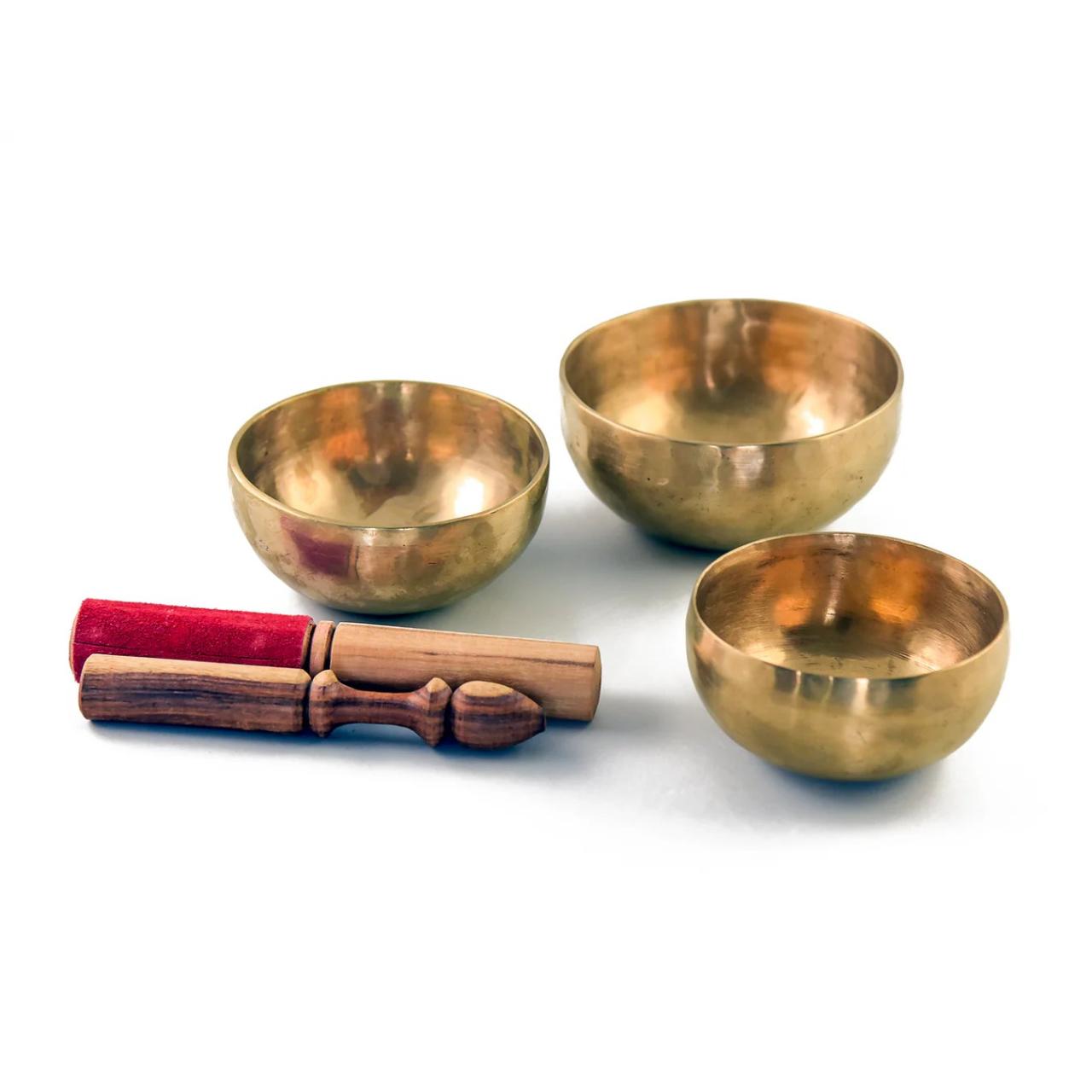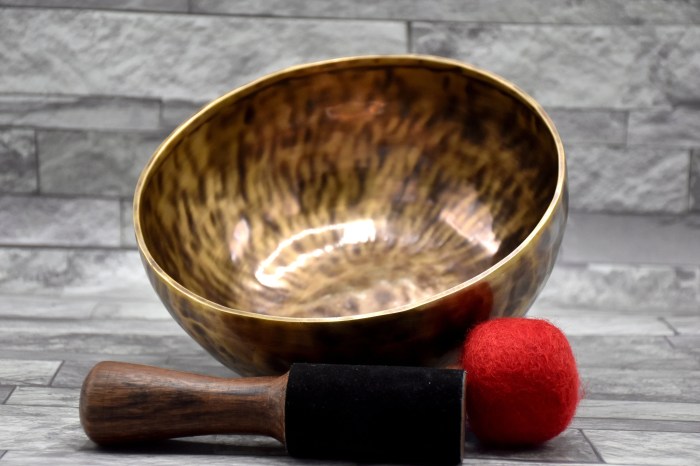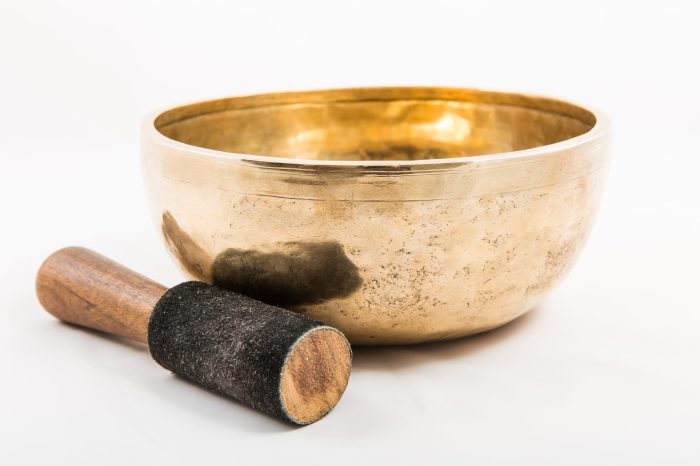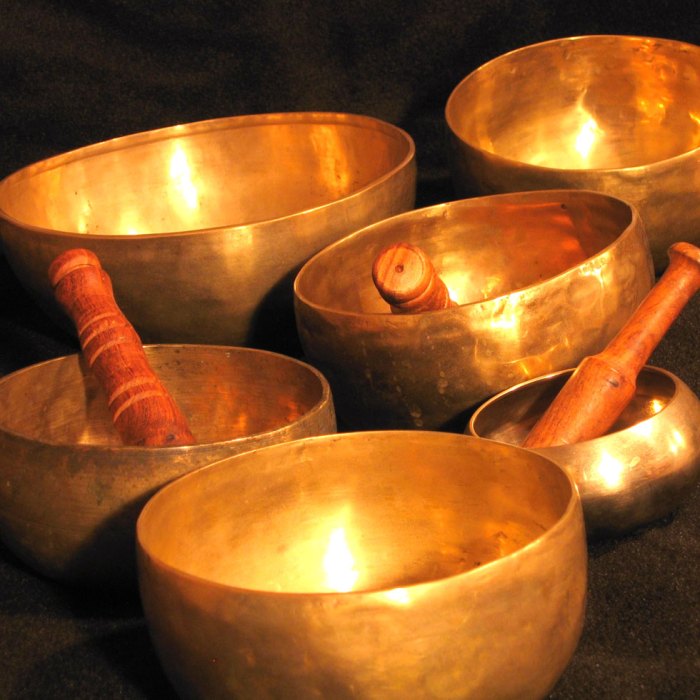Immerse yourself in the enchanting world of Tibetan bowls, where ancient traditions and modern practices converge to create a harmonious blend of healing and spirituality. Explore the rich history, intricate craftsmanship, and profound benefits of these mystical instruments as we delve deep into the realm of sound therapy.
Introduction to Tibetan Bowls

Source: shopify.com
Tibetan bowls, also known as singing bowls or Himalayan bowls, have a rich cultural history and are deeply rooted in Tibetan Buddhist traditions. These bowls are believed to have originated from the Himalayan region, with some sources suggesting they date back to 560-480 B.C.The materials traditionally used to make Tibetan bowls include a combination of seven metals, representing different planets in the solar system.
These metals typically consist of copper, tin, iron, lead, zinc, silver, and gold. The unique composition and craftsmanship of these metals contribute to the distinct sound and vibrations produced by Tibetan bowls when played.
Names of Tibetan Bowls
Tibetan bowls are known by various names across different regions and cultures. In addition to being called Tibetan bowls, they are also referred to as Himalayan bowls, singing bowls, or meditation bowls. Each name reflects the different uses and practices associated with these sacred instruments.
Types and Variations of Tibetan Bowls

Source: etsystatic.com
Tibetan bowls come in various types and variations, each with its unique characteristics and purposes.
Singing Bowls
Singing bowls are the most common type of Tibetan bowls, known for their ability to produce a soothing sound when struck or rubbed with a mallet. They are often used in meditation, sound healing, and relaxation practices.
Ritual Bowls
Ritual bowls are typically used in religious ceremonies and rituals in Tibetan culture. They may have intricate designs and engravings that hold symbolic meanings related to the specific practice or tradition.
Decorative Bowls
Decorative bowls are ornamental pieces that may not produce a distinct sound like singing bowls but are valued for their craftsmanship and aesthetic appeal. They are often used as home decor or as gifts.
Modern Variations
Modern variations of Tibetan bowls may incorporate different materials, shapes, and designs to cater to contemporary preferences. Some may be electrically powered or made with innovative techniques while still maintaining the essence of traditional Tibetan bowls.
Unique Designs and Engravings
The unique designs and engravings found on Tibetan bowls often hold spiritual or cultural significance. Symbols like the Eight Auspicious Symbols of Buddhism or intricate patterns representing nature and cosmic elements are commonly seen on these bowls, adding to their beauty and meaning.
Manufacturing Process of Tibetan Bowls

Source: belladodds.com
In the creation of Tibetan bowls, a meticulous and traditional process is followed to ensure the quality and authenticity of each bowl. Handcrafting plays a vital role in preserving the cultural heritage and spiritual significance associated with Tibetan bowls, distinguishing them from machine-made imitations.
Traditional Methods of Making Tibetan Bowls
Artisans begin by selecting a specific blend of metals, typically including copper, tin, and other alloys, which are melted together in a furnace. The molten metal is then poured into a mold and hammered repeatedly to shape the bowl. Skilled craftsmen use a combination of heat, pressure, and precise hand movements to create the distinct shape and resonance of the Tibetan bowl.
Significance of Handcrafting vs. Machine-made Bowls
Handcrafting Tibetan bowls not only ensures the unique sound and vibration qualities that are inherent to these sacred instruments but also allows for individualized variations in design and tone. Each handmade bowl carries the artisan’s personal touch and dedication, making it a cherished piece with its own character and energy.
Role of Artisans in Preserving Tibetan Bowl Making
The art of Tibetan bowl making has been passed down through generations, with artisans playing a crucial role in upholding the ancient techniques and spiritual essence of these instruments. By continuing to create bowls through traditional methods, craftsmen contribute to the preservation of Tibetan culture and the profound healing properties associated with Tibetan bowls.
Healing Properties and Benefits of Tibetan Bowls

Source: sonicsafarimusic.com
Tibetan bowls have long been used for their healing properties and therapeutic benefits. The vibrations and sounds produced by these bowls are believed to promote relaxation, reduce stress, and improve overall well-being.
Therapeutic Benefits of Tibetan Bowls
- Tibetan bowls are often used in sound healing practices to restore the natural balance of the body and mind.
- The vibrations from the bowls are thought to stimulate the body’s natural healing processes and promote deep relaxation.
- Many people use Tibetan bowls to alleviate anxiety, depression, and insomnia.
Use of Tibetan Bowls in Sound Healing
- During sound healing sessions, Tibetan bowls are placed on or around the body and played to create harmonious vibrations.
- Practitioners believe that the sound waves produced by the bowls can help clear energetic blockages and promote emotional release.
- Some sound healers use Tibetan bowls in conjunction with other instruments to enhance the healing experience.
Spiritual and Mental Well-being with Tibetan Bowl Meditation
- Many individuals use Tibetan bowls in meditation practices to achieve a deeper state of relaxation and mindfulness.
- The soothing sounds of the bowls can help quiet the mind, reduce stress, and promote a sense of inner peace.
- Regular meditation with Tibetan bowls is believed to enhance spiritual growth and mental clarity.
Closure

Source: plusvalueindia.com
In conclusion, Tibetan bowls stand as timeless artifacts that not only produce soothing sounds but also hold the key to unlocking a realm of holistic well-being. From their cultural roots to their therapeutic effects, the journey through Tibetan bowls opens doors to a world where sound becomes a powerful tool for healing and inner peace.